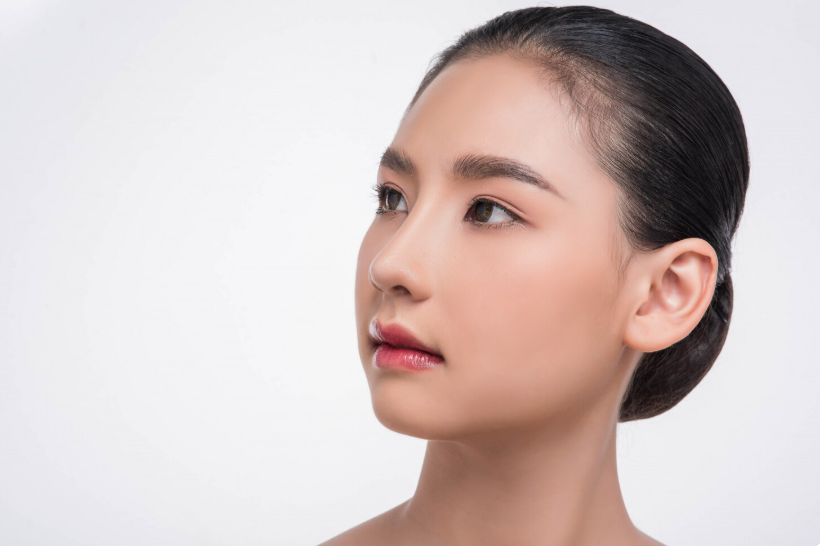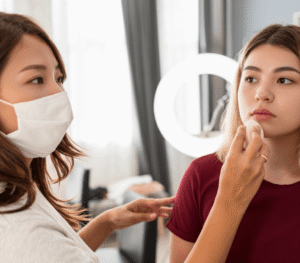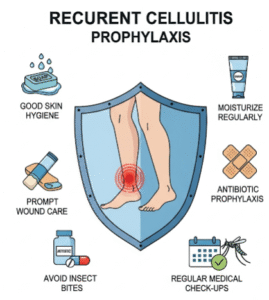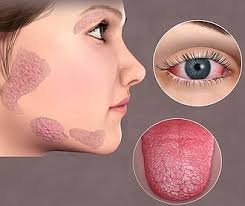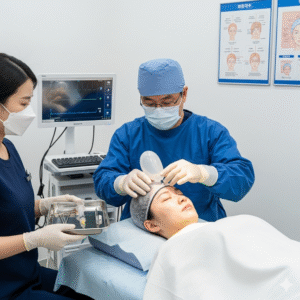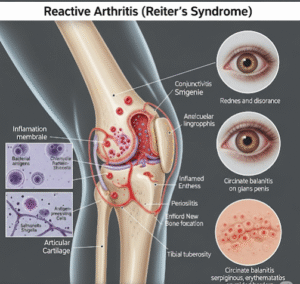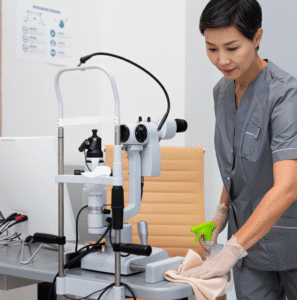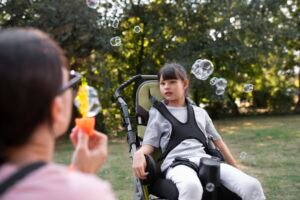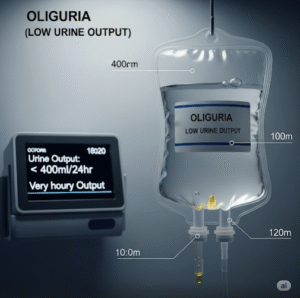What It Is
Chin augmentation implant—also known as genioplasty or mentoplasty—is a cosmetic surgical procedure where a biocompatible implant (commonly silicone or porous polyethylene/Medpor) is placed over the chin bone. The goal is to improve projection, enhance definition, and create facial harmony.
In Korea, chin augmentation is one of the most sought-after facial contouring procedures, often performed with state-of-the-art 3D imaging and custom implant design. This allows highly personalized results that emphasize natural beauty and balanced proportions.
Why It’s Done
Cosmetic and Structural Goals:
- Strengthens a weak or recessed chin
- Balances the lower face in harmony with the nose and jawline
- Improves overall facial profile, often combined with rhinoplasty or jawline surgery
Age and Lifestyle Considerations:
- Adults of all ages may benefit from the procedure
- Non-smokers and patients in good health typically experience smoother recovery
- Common among individuals seeking the popular “V-line” or defined lower face aesthetic
Alternatives
- Dermal Fillers: Non-surgical option with immediate but temporary results (lasting 9–18 months)
- Fat Grafting: Uses the patient’s own fat, providing natural results but with variable longevity
- Sliding Genioplasty: A bone-cutting procedure that repositions the chin for more dramatic or structural corrections
- Non-surgical Contouring: Botox or threads for minor reshaping, though less effective for true augmentation
Preparation
Before surgery, patients typically undergo:
- Consultation and Imaging: Facial analysis with 3D simulation to select implant shape and size
- Medical Evaluation: Blood tests and overall health assessment
- Lifestyle Adjustments: Avoid smoking, alcohol, and blood-thinning medications prior to surgery
- Fasting: Required for 6–8 hours before general anesthesia or sedation
How It’s Done
Type of Procedure: Surgical, performed under general anesthesia or deep sedation
Duration: Approximately 1–2 hours
Step-by-Step Process:
- Incision is made inside the mouth (intraoral) or under the chin (submental)
- A small pocket is created over the chin bone
- Implant (silicone, Medpor, or custom 3D) is inserted and carefully positioned
- Implant is secured with sutures or micro-screws to prevent shifting
- Incision is closed with dissolvable stitches
Hospitalization: Usually outpatient, with same-day discharge or short observation
Recovery
- Initial Phase: Swelling and bruising are most noticeable during the first week
- Pain Management: Managed with oral medications and cold compresses
- Wound Care: Antiseptic mouth rinses for intraoral incisions; gentle hygiene for external incisions
- Diet: Soft foods recommended in the first few days
- Downtime: Most patients return to daily activities within 7–10 days
- Final Results: Fully visible after 1–3 months, once swelling resolves
Possible Complications
As with any surgery, chin augmentation carries potential risks, including:
- Infection
- Implant displacement or asymmetry
- Temporary numbness in the lower lip or chin
- Rare implant extrusion or bone erosion
- Dissatisfaction with appearance, which can be minimized with pre-operative imaging and consultation
Treatment Options in Korea
Diagnosis
- 3D Facial Imaging: Widely used to simulate results before surgery
- CT Scans and X-rays: Sometimes performed for structural analysis
- Specialist Consultation: Board-certified plastic surgeons assess facial harmony and patient goals
Medical Treatments
- Non-surgical alternatives such as fillers or fat grafting for those not ready for permanent implants
- Hybrid treatments, combining chin liposuction or jawline contouring for balanced results
Surgical or Advanced Therapies
- Silicone Implants: Most commonly used; safe, adjustable, and removable
- Medpor Implants: Porous structure allows tissue integration, enhancing stability
- Custom 3D Implants: Created from CT scans for a perfect fit to each patient’s anatomy
Rehabilitation and Support
- Regular post-op checkups ensure implant stability and recovery progress
- Swelling care and optional lymphatic massages are often offered
- International clinics provide translation services, airport transfers, and recovery accommodations
- Long-term follow-up is standard for monitoring results and patient satisfaction

